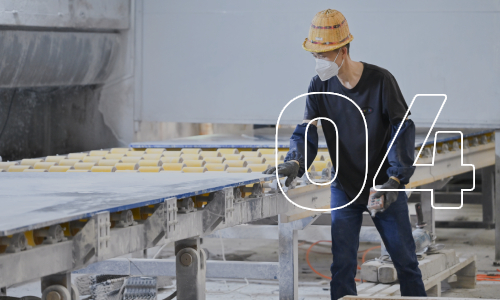Cutting and Fabrication
Overview
In order to convert raw materials into completed products for construction and design, natural stone and marble must be cut and fabricated using a number of processes. This procedure calls for exactness, expert craftsmanship, and specialised tools.

Quarrying
Large chunks of stone are taken out of quarries at the start of the trip. To reduce waste and preserve the integrity of the stone, techniques like wire sawing, diamond wire cutting, and conventional processes are used.
Block Dressing
Blocks are treated after extraction to smooth down sharp edges and provide a more consistent shape. This may entail using chisels or saws to trim the blocks.
Cutting
After that, the dressed blocks are cut into tiles or slabs. For this, high-powered saws with diamond blades are frequently utilised, enabling accurate, clean cuts. Depending on the desired use, different thicknesses can be obtained.
Surface Finishing
The slabs are surface finished after cutting to improve their durability and look. This includes:
- Polishing: Using abrasive pads to create a glossy finish.
- Honing: Producing a matte finish with a softer feel.
- Texturing: Creating patterns or reliefs for added character.
Edge Treatment
To fit design tastes, the slabs’ edges can be polished and curved with a variety of profiles, including ogee, round, and bevel.
Quality Control
Every item undergoes a thorough quality inspection to make sure there are no flaws or variations in finish and colour.
Installation Preparation
The manufactured stones are then ready for delivery and placement. According to architectural blueprints, this can entail cutting parts to precise measurements and attaching any backing or supports that are required.
Ready for the next step?
Marble and natural stone cutting and manufacture are complex procedures that combine creativity and technology. Every step of the process is meticulously planned to guarantee that the finished result is not only aesthetically pleasing but also long-lasting and useful for a range of uses, including flooring, countertops, and decorative elements.









